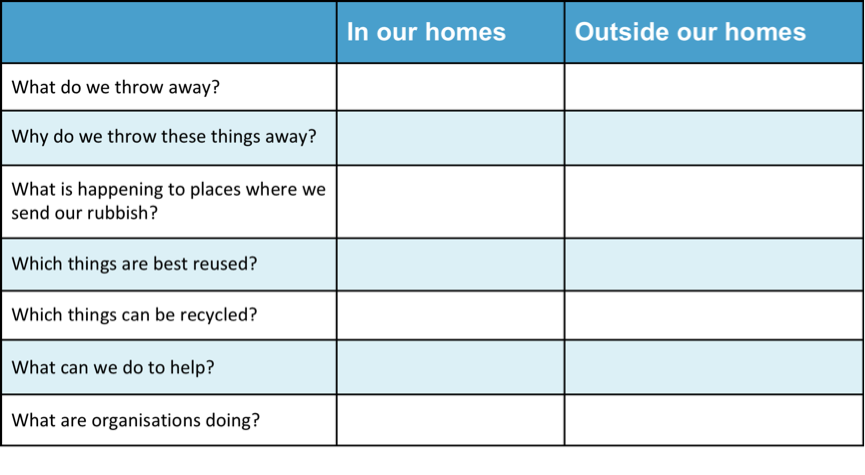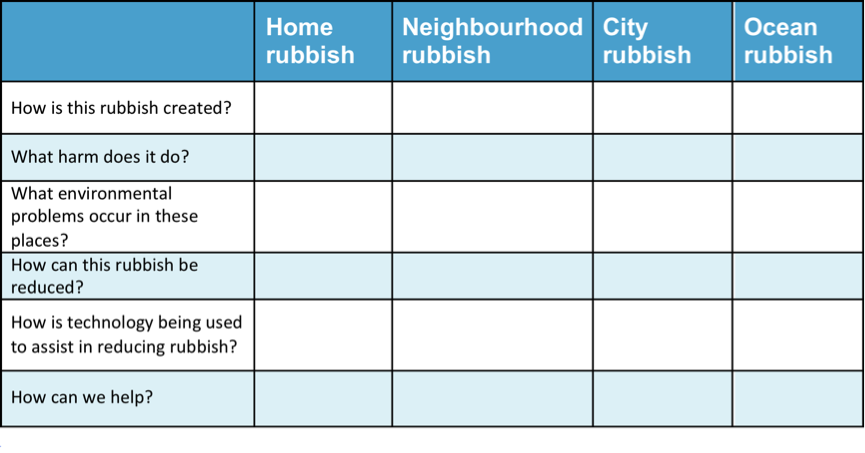Information for Teachers
Curriculum links
Australian Science Standards
CS (ACSSU074) Properties of materials affect waste management or cause pollution
SS (ACSSU075) Earth’s surface changes over time as a result of natural process and human activity
GS (ACHASSK090) The use and management of natural resources and waste, and the different views on how to do this sustainably
UIS (ACSHE062) Methods of waste management can affect the environment
New Zealand Science Achievement Objectives
MW: Chemical and physical properties of a range of different materials, technological uses and natural processes
NS: Science is a way of explaining the world and that science knowledge changes
How to search the internet
1 Keep your request short
Fewer words will give a more accurate search.
2 Choose exactly what you want
For example: Arctic Circle Climate
3 Use quotes
Double quotes around a set of words tell the search engine to consider those exact words in that exact order without any change. For example: “Arctic Circle Climate”
4 Use the plus sign (+)
If you add a plus sign (+) between words, the internet will search for all the words. For example: migrate+birds+whales+mammal
5 Use the minus sign (–) to say what you don’t want
Use a minus sign (–) to show words you do not want to appear in your results. For example: if you search for burrowing animals and do not want mammals in your search, –mammals will exclude mammals. Note that you need to put a space before the minus sign for the word to be excluded.
6 Be very clear about what you don’t want
Part 1
Ask questions and make predictions
After reading Don’t Throw It Away! you may have many questions about how people create waste or trash and some solutions to this problem.
List your questions
- Compare your list with questions that others have.
- Choose a question you would like to investigate.
- You can work alone, with a partner, or in a small group.
You may want to choose one or more of these questions to investigate
Q1. Why is there an increasing problem of trash being thrown away on our planet?
Q2. How can trash be reduced, reused, or recycled by individuals?
Q3. How can trash be reduced, reused, or recycled by groups or organizations?
Go to Part 2 Plan and investigate →Part 2
Plan and investigate
Do searches in the internet or in books or talk to people who can help to find the information you are looking for.
Your teacher may suggest suitable websites for further information.
Go to Part 3 Record and analyse data →Part 3
Record and analyse data
Find a way of recording your information that will allow you to see any patterns in the data.
Data Chart for Don’t Throw It Away!
(Download and change to suit your information)
 Download Chart
Download Chart
Go to Part 4 Evaluate the information →
Part 4
Evaluate the information
1. Look over the information you have gathered and the patterns you have found.
Why is there an increasing problem of trash being thrown away on our planet?
2. Search for other patterns.
How can trash be reduced, reused, or recycled by individuals? How can trash be reduced, reused, or recycled by groups or organizations?
3. Makes notes about what you find.
Go to Part 5 Communicate and share ideas →Part 5
Communicate and share ideas
Look over all of the information that you have gathered in your investigation.
What are the most important ideas about your topic?
Make a chart showing the most important ideas.
 Download Chart
Download Chart
← Return to menu
